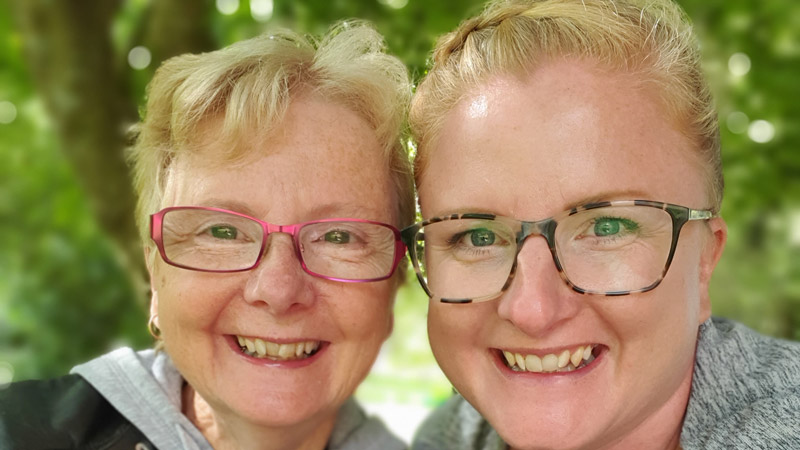
A new section of our online tool My Stroke Guide brings together videos, resources and apps for stroke survivors with aphasia, a language and communication disorder. Stroke survivor Jan McDonald and her daughter Carly gave it a try.
Jan, 62 from Portsmouth, has lived with aphasia since her stroke in 2005. Carly explains: 'Mum's speech, reading, writing and sometimes comprehension are all affected. Most websites are not easy for her to navigate.'
Jan and Carly found the new 'Aphasia and communication' area of My Stroke Guide a useful way to find out more about the condition and life after stroke in an aphasia-friendly way.
'We really like the clear layout of the sections, that all sentences are simple, well-spaced and with the key words highlighted,' says Carly. 'The videos convey complex subject matters into accessible clips. They give key information, aided by pictures, at a really good pace. There is plenty of time between the spoken messages to be able to process the information.
'It was great that the 'Getting online' section could be viewed as a whole document or you could look at chapters in smaller chunks. Mum wants to use social media more to connect with friends and family, so she really liked the information here.'
My Stroke Guide also signposts to some of the most commonly used aphasia therapy apps. This section was created together with people with aphasia who were able to try out the apps and share their thoughts. 'I helped Mum to download two apps onto her phone, which she hasn't used before,' says Carly. It's important to find the app that best supports your needs - ask your speech and language therapist to recommend an app based on your communication goals.
Give it a go
You can find the Aphasia and communication section on My Stroke Guide.
Stroke News magazine
This article is featured in the spring 2022 edition of our magazine, Stroke News. Subscribe to our future editions available in print, on audio CD, or via email.
